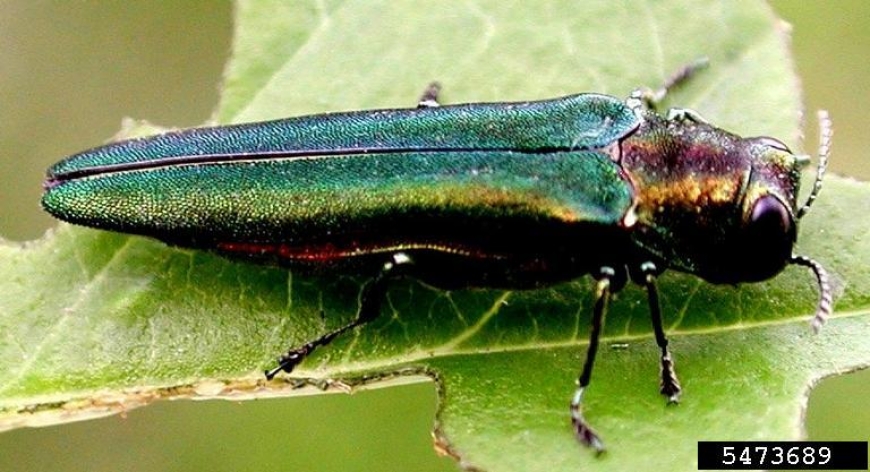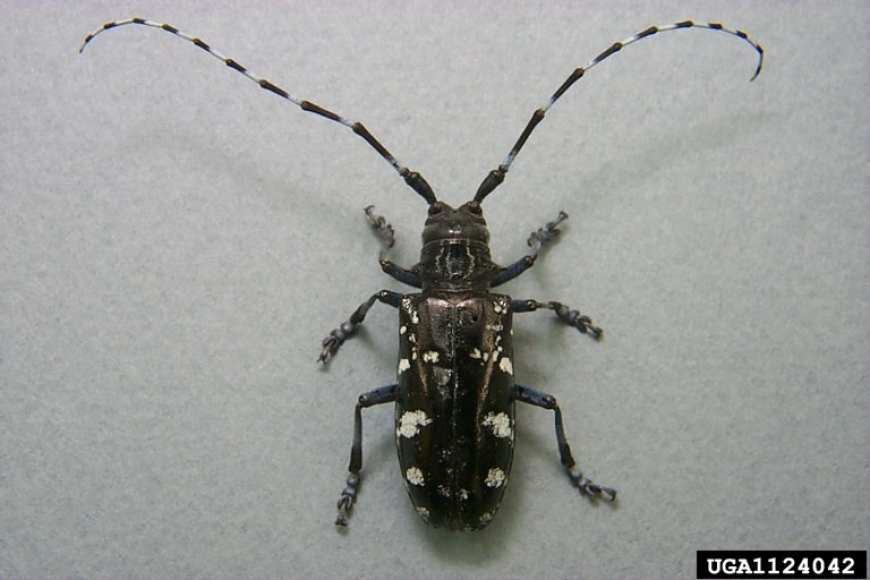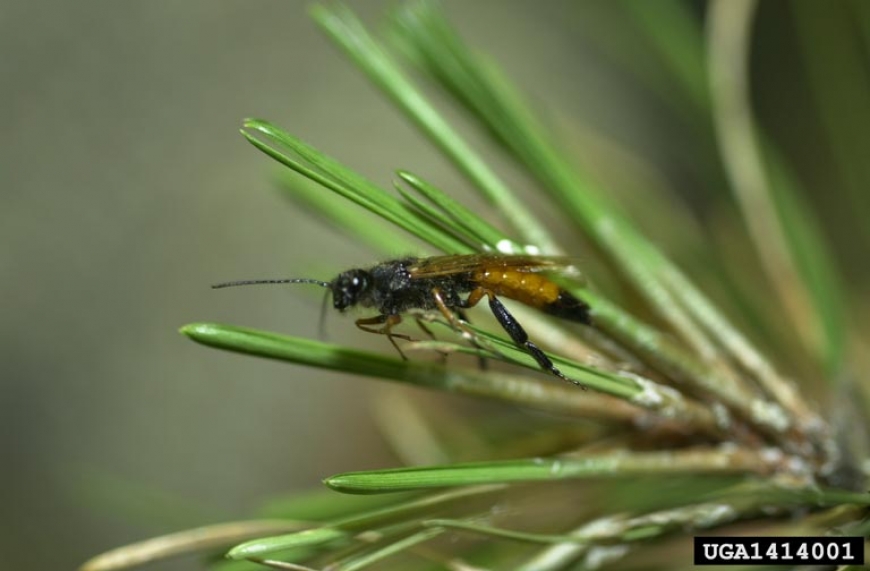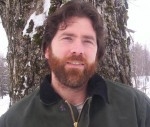


Emerald ash borer. Photo: Leah Bauer, USDA Forest Service Northern Research Station, Bugwood.org
Asian Longhorn beetle. Photo: Donal Duerr, USDA Forest Service, Bugwood.org
Sirex wood wasp. Photo: David R. Lance, USDA Aphis PPQ, Bugwood.org



The Unthinkable, The Possible, and The Inevitable: Invasive Species Awareness Week
February 21-27 is National Invasive Species Awareness Week, not to be confused with New York State’s Invasive Species Awareness Week, which happens in July. I don’t know about you, but I’d prefer a Blissful Ignorance Week when it comes to creepy insect pests. But since I can only keep my head in the sand so long before my ears get itchy, what the heck—bring on this “Awareness” stuff.
Naturally, many of us in northern New York State who live and/ or work in the woods think about those invasive species which affect trees. Three significant threats to our forests are the Asian longhorn beetle (ALB), sirex wood wasp (SWW), and emerald ash borer (EAB), otherwise known as The Unthinkable, The Possible, and The Inevitable.
If there’s any good news, it’s that The Unthinkable is the farthest away. Good thing, too, because the Asian longhorn beetle has the potential to wipe out many hardwood species, starting with their favorite, sugar maple. The closest ALB infestations are in Toronto and New York City. But because this is a pest we can’t afford to have in our forests, it’s one we can’t afford to ignore. It would be great if we all could learn to recognize ALB, and report potential sightings. And of course, “Don’t move firewood.”
The Possible, sirex wood wasp, hasn’t gotten a lot of press, but it’s as close as Oswego County. The SWW is adept at killing pine trees, especially in stressed and overcrowded stands. The best protection against sirex wood wasp is to manage timber to avoid overcrowding, and to watch for sudden or unexplained pine mortality.
Then there’s The Inevitable, the little green gem that has been just a mile from St. Lawrence County across the river in Mallorytown, Ontario for the past six or seven years. For such a destructive pest, the EAB is beautiful. It’s a small (3/8” to ½”) bullet-shaped beetle that would be easy to overlook if not for its bright, metallic, emerald-green color with copper highlights.
The adult beetles do little harm, but their immature stage (larvae) feed on the cambium tissue—the layer of living cells between the outer bark and wood—of ash trees, girdling and thus killing them. Aside from the relatively few ash that will be protected with insecticides (at considerable expense) through the estimated 15-20 year duration of EAB infestation, nearly all of the estimated 900 million ash trees in New York will be lost.
To prepare for the arrival of EAB, communities need to identify how many ash trees they have. This way they can calculate removal costs and plan accordingly, and locate ash trees of good vigor and form that they may want to preserve. While some towns and villages have tree inventories, many do not, and some of those may welcome volunteer help to survey ash trees.
Learning the signs of EAB infestation is also important. When adults first emerge from an infested tree they make a D-shaped exit hole. While it has a distinctive shape, this hole is tiny, just 1/8” across and hard to see. More conspicuous signs are bark splits and epicormic sprouting, which is when branches sprout directly out of the trunk, a response to severe stress. Heavy woodpecker activity in late winter is another good indicator.
Report all suspected cases of EAB infestation to the New York State Department of Environmental Conservation, or your Cooperative Extension office. For more information on invasive species, visit nyis.info or sleloinvasives.org.
Well that’s about all the awareness I can take for the time being; I’m off to get sand in my ears again.

